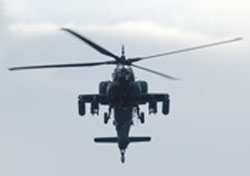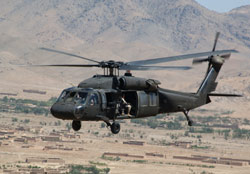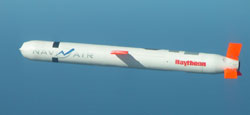 |
|
Weapon Systems
The United States Armed Forces are the most technologically advanced military force in the world. The deadly weapons described here have been used in Afghanistan and may be used in the ongoing hunt for Osama bin Laden. Now, with your help, the internet can be added to America's technology arsenal. Apache helicopter 
The Boeing IDS (McDonnell Douglas) AH-64 Apache is the US Army's principal attack helicopter. Built to endure front-line environments, it can operate during the day or night and in adverse weather using the integrated helmet and display sight system. The Apache is also equipped with some of the latest avionics and electronics, such as the Target Acquisition Designation Sight, Pilot Night Vision System (TADS/PNVS), Black Hole passive infrared countermeasures, map-of-earth navigation, and GPS. An advanced model, the AH-64D Longbow incorporates a millimeter wave fire control radar (FCR), radar frequency interferometer (RFI), fire-and-forget radar-guided HELLFIRE missile and cockpit management and digitization enhancements. The combination of the FCR, RFI, and the advanced navigation and avionics suite of the aircraft provide increased situational awareness, lethality and survivability.
Blackhawk helicopter 
The UH-60 Black Hawk is the primary medium-lift utility and assault helicopter of the United States Army. It can perform a wide variety of functions, including air assault, general support, aeromedical evacuation, command and control and special operations support to combat and stability and support operations. In air assault operations it can move a squad of 11 combat troops and equipment or carry the 105 mm M102 howitzer, thirty rounds of ammunition, and a six-man crew. Alternatively, it can carry 2,600 lb (1,170 kg) of cargo or sling load 9,000 lb (4,050 kg) of cargo. The Black Hawk is equipped with advanced avionics and electronics, such as the global positioning system.
Tomahawk missile 
Tomahawk is an all-weather submarine or ship-launched anti-ship or land-attack cruise missile. After launch, a solid propellant propels the missile until a small turbofan engine takes over for the cruise portion of flight. Tomahawk is a highly survivable weapon. Radar detection is difficult because of the missile's small cross-section, low altitude flight. Similarly, infrared detection is difficult because the turbofan engine emits little heat. The anti-ship variant of Tomahawk uses a combined active radar seeker and passive system to seek out, engage and destroy a hostile ship at long range. Upgrades include: a Global Positioning System (GPS) receiver; an upgrade of the Digital Scene Matching Area Correlation (DSMAC) system; and increases in range, Time of Arrival (TOA) control, and improved 402 turbo engines
Photos Courtesy U.S. Army. | ||||||||||||||||||||||||||||||||||||||||||||||||||||||||||||||||